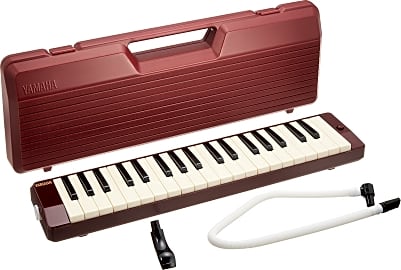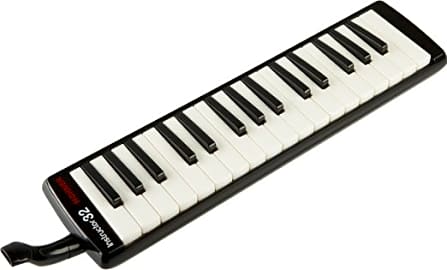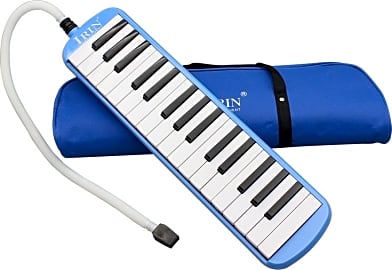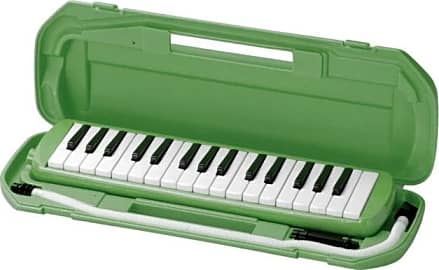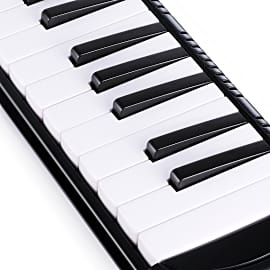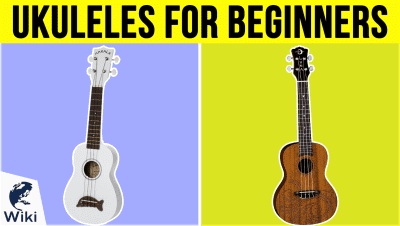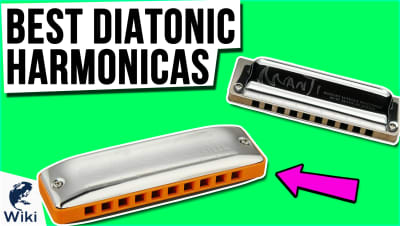The 10 Best Melodicas

This wiki has been updated 43 times since it was first published in June of 2016. Whether you want a handy portable model for teaching the basics of music or you would just like to enjoy the unique sound of a simple and fun woodwind instrument, you'll find one of these melodicas perfect for your needs. Also known as wind pianos, they're not only easy to transport, but also reasonably durable, simple to learn, and can help musicians of any skill level to express themselves. When users buy our independently chosen editorial choices, we may earn commissions to help fund the Wiki.
Editor's Notes
December 08, 2019:
Much like the ukulele and harmonica, a lot of the appeal behind the melodica comes from its inexpensive, simple, and portable nature. As such, the Ammoon Beginner, D'Luca Melodyhorn, and Hohner Airboard are perfectly acceptable choices, especially for beginners, because they cost about $30 or less. The D'Luca Melodyhorn is only slightly more expensive. If you're playing by yourself or just casually for fun, any of these four should help scratch that musical itch.
If you'll be jamming with others or especially if you plan on playing on stage, you should consider upgrading to a slightly more well-made melodica from a quality manufacturer. The Suzuki M-37C, Hohner 32B, and Yamaha Pianica are all considered to about on the same high level as far as production quality goes. That doesn't mean they're interchangeable, though; the Suzuki has a bit of a punchy, pronounced tone and the Yamaha a slightly softer and more balanced output, for example. If you'll be performing for large groups, you might want to play all three of those before deciding on one. The Yamaha P25F is in the same quality range but is considerably more compact, with only 25 keys.
As with most musical instruments, you can also find some interesting (and quite costly) specialty models. The Suzuki Bass Melodion is considerably lower than the rest, the Hammond Pro-44H sports a massive number of notes and an integrated microphone for amplified play, and in our Special Honors section you'll find information on the wooden Mylodica, which is the only one we found not made with a plastic body.
Special Honors
Sound Electra Mylodica Specially designed by a group of wind piano experts, the Mylodica is good enough to have been used on stage by a number of big-name professional artists. Because it eschews the traditional plastic body in favor of wood, it's able to achieve a tonal level that cheaper, mass-produced melodicas simply cannot. It's quite costly, but it is made to order and as such, is available in various octaves. melodicas.com
Portable And Polyphonic Fun Wherever You Go
Typically classified by range, melodicas fall into five types, which include the soprano, alto, tenor, bass, and the accordina.
Music is versatile as an art form for expression, education, enjoyment, and even therapy. Even more interesting is the fact that there's always something to learn about a new instrument that may not be considered as well-known or even as popular as others. While you've undoubtedly heard of the harmonica and the pipe organ, the melodica is another hybrid-style device with a story all its own.
Also known as a pianica, blow-organ, or wind piano, the melodica is a small and portable, free-reed instrument consisting of a musical keyboard (approximately 2 octaves long) with a mouthpiece on its side through which air must be blown to produce sound. Its sound is similar to that of a keyboard harmonica, however it takes a bit more effort to bend notes on a melodica than it does on a harmonica due to the fact that its reed is kept further away and also because, unlike the harmonica, producing sound on a melodica comes from the action of exhaling only, not inhaling. When playing more than one note at a time, the melodica is also reminiscent of the accordion.
Typically classified by range, melodicas fall into five types, which include the soprano, alto, tenor, bass, and the accordina. Sopranos and altos are characterized by high-pitched, thinner-sounding notes. Some can be played with both hands simultaneously, whereby the left hand plays the black keys, while the right hand focuses on the white keys. Others are played similarly to the tenor, which is a lower-pitched instrument that often leverages only the musician's right hand to play its keyboard, while the left hand holds a handle attached to its base.
A tenor melodica can also be played using both hands, but this requires the insertion of a tube into its mouthpiece hole and placing it on a flat surface to be played like an ordinary piano. The bass type is usually the largest and most expensive with the lowest pitch of all 5 varieties, but it's often more difficult to find than the others. The accordina is constructed out of metal and operates in a similar fashion to a traditional melodica, but its keyboard more closely resembles that of a chromatic button accordion. While the majority of melodicas are made out of plastic, some are also fashioned from wood for the purpose of producing a warmer and richer sound than the plastic variety.
So, what makes the melodica unique from other woodwinds? The primary difference is that whereas traditional woodwind instruments like clarinets and saxophones require the use of several fingers to play individual notes (monophonic), the melodica can make use of those same fingers to play chords (multiple notes at the same time), making it a polyphonic device. With that also comes several benefits, including the ability to use the melodica as a way of introducing young kids to the world of music. Its compact size and ability for producing polyphonic sound make it an excellent musical resource for exposing young children to technique. After all, regardless of the type of instrument a young one learns to play, the experience is supposed to be fun, enjoyable, and spark an interest. Melodicas are also relatively inexpensive, so they can be a great starting point for a new student.
Keeping In Tune With The Music
The first decision one must make when thinking about picking up one of these instruments is to determine what its intended use will be. If you're just starting out and wish to try something new, there's no reason to break the bank to purchase the fanciest melodica you can find. There are plenty of inexpensive plastic options available that can produce a nice sound. At the same time, you don't want to run out and buy the cheapest melodica out there, as you also want the instrument to be comfortable, easy to play, and to produce a superior tone. This will require going to your local music store and trying out the different models available.
This will require going to your local music store and trying out the different models available.
Secondly, consider the keyboard action of the instrument. This describes how responsive the individual keys are when you press down on them. Cheaper melodicas are sometimes characterized by a light and inconsistent feel to their keys when pushed, whereas more expensive models may provide a solid, weighty feel to the production of sound. Obviously, you want to go for what feels best to you.
Thirdly, understand the care required for the device before making your investment. If you plan to play the instrument as part of a traveling band, for example, it's a good idea to invest in a sturdy, vented case to keep it protected while on the road. This will prevent it from damage or compromised reed function due to accumulated condensation when the weather turns cold. By contrast, never leave a melodica in a hot car, as this can warp the instrument. Given that melodicas are sensitive to both condensation and temperature changes, it's also a good idea to get into the habit of releasing excess moisture that accumulates inside the device when you play. Opening the moisture vent at the end of the instrument and shaking it up and down vertically is a good way to get rid of it.
Keep in mind that you will also have to tune your melodica from time to time. While it's not necessary that the instrument be in perfect tune, the relative pitch of each of the notes should be close enough when compared to one another. Either a digital or strobe tuner device can work well for this purpose, but you can also consult a veteran player, music teacher, or store owner to help you determine what constitutes an acceptable range of relative pitch for your particular instrument.
A Brief History Of The Melodica
Although some form of the instrument has been around since the nineteenth century, the modern version of the melodica was invented in the 1950's by the Hohner music company, a German-based instrument manufacturer known best for its harmonicas and accordions. The company was originally founded back in 1857 by clock maker Matthias Hohner and, in addition to the aforementioned instruments, also manufactures kazoos, recorder flutes, banjos, guitars, and even ukuleles.
The melodica wasn't considered a truly serious instrument until the 1960s, when composers like Steve Reich and jazz musician Phil Moore, Jr. began to use it for musical expression. Reich made use of the instrument in his 1966 piece called Melodica and Phil Moore in his 1969 Atlantic Records album titled Right On.
Today, the instrument is used worldwide for a variety of different musical genres, including Jamaican dub, reggae, and indie rock.


